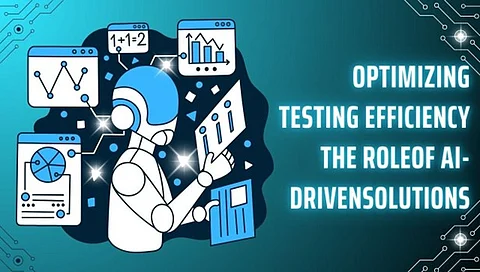

In this modern era, manufacturing and development environments face significant challenges in testing processes that can lead to delays and increased production costs across global markets. Divyansh Jain, an expert in machine learning and optimization, explores the transformative potential of AI-driven solutions in reducing testing time while enhancing quality standards across industries. This article delves into how AI, particularly machine learning, is revolutionizing testing practices, addressing traditional bottlenecks, and improving overall efficiency in sectors like pharmaceuticals, electronics, and software development.
Strategies for testing processes in manufacturing environments have over the years acted as more of a hindrances to production since they often needed a lot of time and resources to complete. The traditional approaches to testing come with various problems when faced with the issues of increased product complexity and variable requirements. Current systems now autonomously manage priorities of test cases and deliver adaptive quality control allowing for shorter periods of testing while increasing the efficiency and quantity of defective areas detected.
AI and ML in testing optimization have shown excellent outcomes – Cutting down the testing cycles by 37.8 % while increasing the discovery of defects by an average of 24.6%. These developments help in testing while optimising the usage of resources hence reducing repeated testing across the manufacturing lines.
The traditional testing approach applies uniform protocols to all components regardless of risk profile or performance history. This inefficiency is particularly evident in automated production lines, where components with low defect rates receive unnecessary attention. Conventional methods consume 30-42% of total production time, often misallocating resources.
AI-powered solutions address these issues by dynamically adjusting test protocols based on defect history, risk profile, and real-time data. Through intelligent allocation, AI systems prioritize high-risk components for detailed testing while streamlining testing for reliable ones. This approach effectively reduces bottlenecks in multi-product environments, where testing can extend lead times by up to 40%.
AI's key innovation in testing is predictive quality analytics. While traditional methods often detect defects late in production, causing costly delays and resource waste, ML-driven systems forecast potential issues before they occur, improving early detection and reducing false rejections. Facilities using ML for predictive quality control have achieved a 32.3% decrease in false rejections while maintaining 99.5% defect detection sensitivity.
The combination of real-time sensor data and cloud processing further enhances these capabilities. ML models, trained on extensive production data, quickly adapt to environmental changes and adjust testing protocols in real time, improving both detection accuracy and operational efficiency while significantly reducing production downtime and testing redundancies.
AI has also pioneered the concept of smart selective testing where testing resources will be proportional to risk at any point in time. This system accepts streaming synchronous data in the order of hundreds of IoT sensors throughout the distribution stages, hence determining the intensity and focal point of testing. For example, in the case of facilities practising ML-based selective testing, the reported enhancement was found to be 41.5% in the rationalization of resources, and a 35.7% reduction in the testing time. These improvements can be attributed to how the AI could make real-time observations of the production conditions and how it could modify the testing parameters about the complexity and reliability of such components.
This becomes especially important because the static allocation of resources traditionally results not only in better resource utilization but also helps to decrease operator fatigue and errors. Some of the activities in testing and developments of automatic protocols, specifically to minimize the interference of human beings in the testing operations and boosting the efficiency of the tests.
The application of machine learning in assessing tests has been proven to be efficient in enhancing efficiency in many fields. For instance, while using ML in automotive manufacturing testing has enhanced, defect detections by 31.2% while at the same time, the quality control times have been lessening by nearly 40%. Likewise, electronics manufacturing facilities incorporated an AI-based inspection system and gained a 28.9% overall improvement in throughput and a 41.6% decrease in false positives.
Apart from the direct working benefits, the ripple effects of using AI optimization include significant measured results within considerable cost-effectiveness and enhanced utilization of assets. In enhancements identified by respondents, facilities have indicated that there is an average return on investment (ROI) standing at 312% in less than 18 months:
The costs of implementation have been described to be recoverable in about 7-9 months on average. Furthermore, predictive maintenance driven by AI has also improved equipment reliability and availability through the reduction of 34.2% of the overall mean time between failures.
In conclusion, Divyansh Jain highlights that AI-driven testing optimization has proven to be a transformative force in manufacturing and development environments. By addressing the inefficiencies of traditional testing methods, AI solutions have significantly reduced testing time, improved defect detection, and optimized resource utilization. The adoption of these technologies has delivered not only operational efficiencies but also impressive financial returns, making AI optimization an essential component of modern manufacturing strategies. As AI continues to evolve, its role in testing and quality control will only grow, paving the way for more resilient and adaptive production systems. His insights into AI-driven testing optimization provide valuable guidance for organizations looking to enhance their testing processes and achieve greater operational efficiency.
